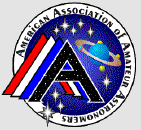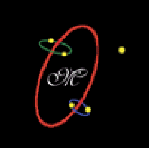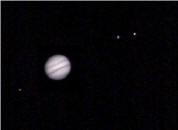|

www.AstroMax.com
Up
Abstract
I. Purpose
II. Background
III. Orbits
IV. Period Determination
V. Methods
VI. Kepler's Laws
VII. Observing Suggestions
VIII. Data Gathering
IX. Data Processing
X. Observer's Data Results
XI. Other Quad-A Results
XII. Conclusions
XIII. Attachments

This Project Jupiter Report
was prepared by
Mizar Consulting
Eugene A. Lanning
130 Hillside Terrace
Nebraska City, NE
68410-3740
ealanni@alltel.net
Member of AAAA
AAAA
The American Association
of Amateur Astronomers
P.O. Box 7981
Dallas, TX
75209-0981
e-Mail:
aaaa@astromax.com
www.AstroMax.com
| |
 Project
Jupiter Project
Jupiter
 
XI. Other Contemporary Quad-A Results
A. Number Participants in Project Jupiter
In the initial Fall of 2002 Project Jupiter campaign there were five
AAAA members that participated in the project and submitted at least
partial data as of the date of this report. Most members observed and
logged the separations all of the moons of Jupiter, for a total of 62
Project Jupiter observation data sets.
B. Methods Utilized
The participants used a variety of techniques to estimate the
separation of the moons from Jupiter. A breakdown by method is:
| Method |
Number of observation sets |
| JD Estimating
|
29 |
| Sketching |
3 |
| CCD/Astrophotography
|
16 |
| Astrometric
Measurements |
14 |
C. Results by method
1. Standard Project Jupiter Method Results
The accuracy for which the orbital period is determined varies with
the observing technique selected. The results for determining the
orbital period, independent of the moon selected, is:
| Method |
%
Difference |
| JD Estimating
|
0.35 |
| Sketching |
Indeterminate |
| CCD/Astrophotography
|
1.2 |
| Astrometric
Measurements |
0.2 |
2. With one Assumption Removed
No other JD results were sufficient to meaningfully remove the
Section X.A.2 assumption. Therefore, Timís results for the mass of
Jupiter, at 2.4% accuracy, using this approach is unique.
|
[Home]
[Abstract]
[I. Purpose]
[II. Background]
[III. Orbits]
[IV. Period Determination]
[V. Methods]
[VI. Kepler's Laws]
[VII. Observing Suggestions]
[VIII. Data Gathering]
[IX. Data Processing]
[X. Observer's Data Results]
[XI. Other Quad-A Results]
[XII. Conclusions]
[XIII. Attachments]
|



